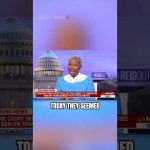In recent weeks, New Jersey has become a focal point of concern as reports of mysterious drones have begun to surface. These drones, some described as large as SUVs, have been seen flying in formations over significant locations, including Trump National Golf Course and various Air Force bases. The implications of these sightings stir unsettling feelings, prompting questions about the nature and intentions behind these aerial intrusions. For many residents, the sight evokes not just curiosity but a deep-seated fear about the potential threats looming in the skies above.
Members of the local community have described the drones as hovering for hours, displaying red and green lights reminiscent of standard aviation signals. However, the familiarity of their appearance does little to diminish the disquiet that accompanies such phenomena. Federal authorities—including the Department of Homeland Security and the FBI—have been largely uncommunicative, leaving the public uneasy about who is operating these drones and for what purpose. When officials express uncertainty about incidents occurring under their watch, it raises alarms about the effectiveness of our surveillance and security systems.
Historically, Americans have maintained a cautious relationship with the skies above them. From the early days of the Cold War to present-day tensions fueled by surveillance technologies, the concept of being observed—be it by foreign powers or our government—has led to a multitude of debates regarding privacy and security. The emergence of these drones serves as a stark reminder that the veneer of safety may not be as thick as once assumed. It recalls instances from pivotal periods in history when citizens stood vigilant against perceived threats, living in a world where paranoia and vigilance were often intertwined.
As these drones capture the public imagination, they also beckon reflections on our moral landscape. Who operates these devices? Are they tools of safety or instruments of oppression? The potential for surveillance on the average American introduces troubling questions about civil liberties and government overreach. In an age where technology shapes the core of our interactions and security, the line between protection and invasion becomes eerily blurred. The average citizen may wonder if modern governance knows too much or too little, leading to a pervasive sense of distrust towards institutions meant to serve and protect.
The historical context of such surveillance brings one to ponder the balance between liberty and security. The drone sightings echo the tension observed during significant changes in governance, where new technologies had the potential both to protect liberties and infringe upon them. With this in mind, recent developments signal a need for robust dialogue within our communities—discussions that outline personal experiences and fears while advocating for transparent governance.
As the situation unfolds, the call for accountability becomes paramount. If it is indeed our government behind these drone operations, then clarity and communication should be their priority. However, if these drones herald a darker era of surveillance—be it by our government or a foreign adversary—a collective response that highlights our values and preserves our freedoms will be crucial. For many, these drones serve as a jarring reminder that the airspace above us could hold answers about our safety and autonomy. What will it take for the veils of uncertainty to be lifted? The inquiry rests not only on those in positions of authority but on every citizen who cares about the integrity of their freedoms and the future of their nation.




